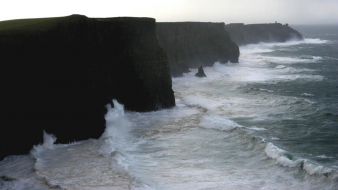Heating homes by burning solid fuel remains the biggest contributor to poor air quality in Ireland, with the fine particulate matter produced responsible for an estimated 1,300 premature deaths per year, the Environmental Protection Agency (EPA) has warned.
The EPA on Tuesday launched its annual Air Quality in Ireland report for 2020.
The report found that while air quality in Ireland is “generally good”, pollution levels were above World Health Organisation (WHO) guidelines at 52 monitoring stations.
These breaches in guidelines for particulate matter, sulphur dioxide and ozone were largely due to the burning of solid fuel for home heating in villages, towns and smaller cities, the EPA said.
It said levels of particulate matter are of growing concern and are particularly high during the winter months, when people’s use of solid fuels such as coal, turf and wood impacts negatively on air quality.
“Ireland still has issues with poor air quality due to the burning of solid fuel in our villages, towns and smaller cities,” said Pat Byrne, EPA Programme Manager.
“Ireland is above WHO air quality guideline values at many locations and it is imperative that we each, as individuals, make cleaner air choices when deciding how to heat our homes, as this can improve our local air quality and have associated health benefits.”
Any movement towards cleaner home heating choices and less smoky solid fuel choices will result in an improvement in air quality, the EPA report said.
It also welcomed that new regulations on the use of solid fuels will come into force in 2022, with all coal products required to be low-smoke and all wood sold for immediate use to have a moisture content of 25 per cent or less.
Decrease in traffic pollution
The EPA report meanwhile also highlighted a large decrease in air pollution from traffic in 2020 due to Covid-19 restrictions.
Air pollution from traffic - nitrogen dioxide (NO2) - fell at all monitoring stations, but most notably at urban traffic locations where levels fell by up to 50 per cent.
Ireland was compliant with EU legal limits on air pollution in 2020, largely assisted by this significant reduction in traffic and associated pollution.
Dr Micheál Lehane, director of the EPA’s Office of Radiation Protection and Environmental Monitoring, said “there were dramatic and immediate decreases in air pollution in our urban areas due to reduced traffic volumes.”
“As we now start to travel more we must not lose sight of the obvious link between our journey choices and levels of traffic derived air pollutants,” he said.
“Pollutants from traffic have a negative impact on people’s health and our actions, as individuals, do impact the air we breathe.”
The EPA stressed that choices made by the Irish public in how they heat their homes and travel “directly impacts the quality of the air we breathe.”
According to the WHO, ambient or outdoor air pollution accounts for an estimated 4.2 million deaths per year worldwide due to stroke, heart disease, lung cancer and chronic respiratory diseases such as asthma.







